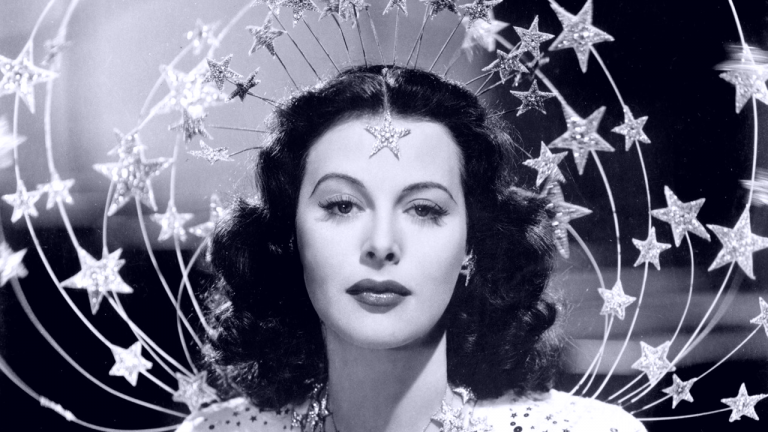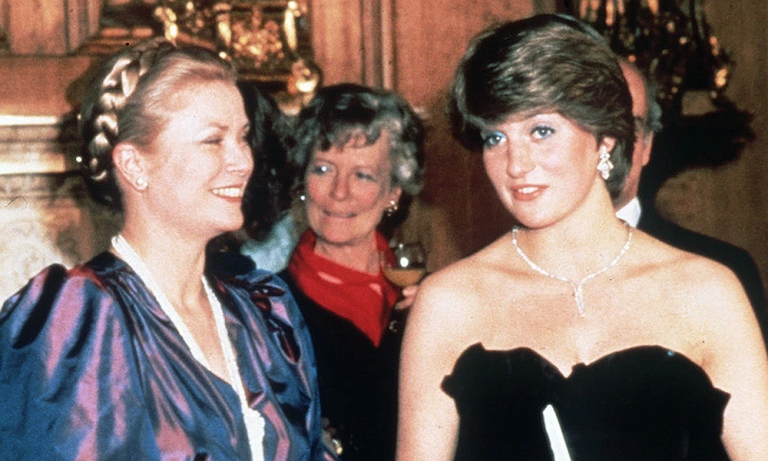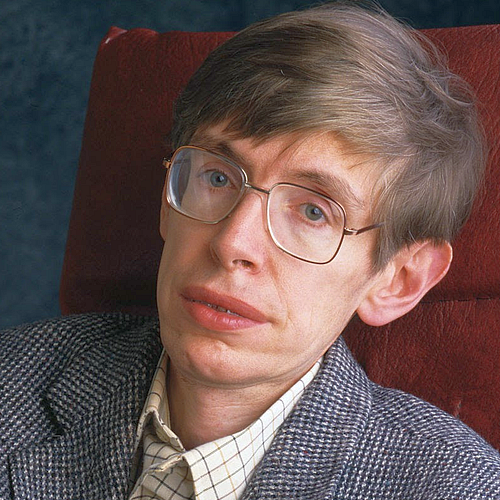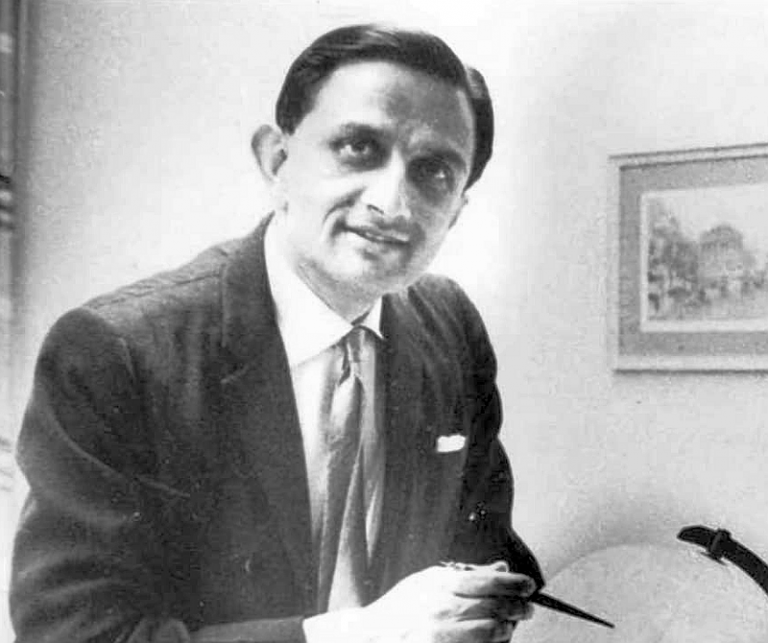New York USA — Luna Society International (LSI) has announced that a crater on Luna, Earth’s Moon, has been renamed to honor humanitarian and statesman Nelson Rolihlahla Mandela on the occasion of his 94th birthday.
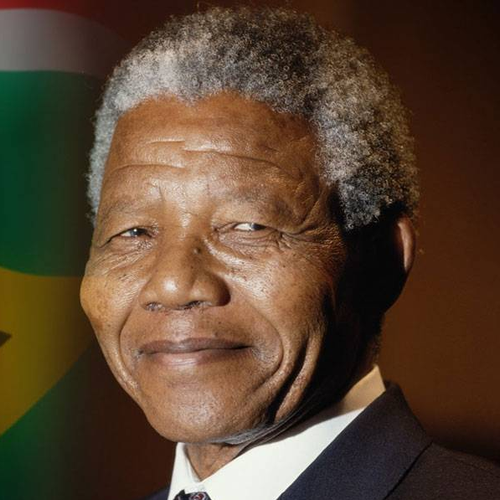
The crater, which is located in the Moon’s Lacus Somniorum (“Lake of Dreams”) district, has been given the honorary designation as the Nelson Mandela International Peace Crater as part of the Nelson Mandela International Day 2012 celebration. Mandela Day was officially declared in 2009 by the United Nations in recognition of the former South African President’s contribution to the culture of peace and freedom.
Nelson Mandela, known popularly as “Madiba,” was born in Transkei, South Africa, on 18 July 1918. His father was Chief Henry Mandela of the Tembu Tribe. Mandela himself was educated at University College of Fort Hare and the University of Witwatersrand and qualified in law in 1942. He joined the African National Congress in 1944 and was engaged in resistance against the ruling National Party’s apartheid policies after 1948. He went on trial for treason in 1956-1961 and was acquitted in 1961.
After the banning of the ANC in 1960, Nelson Mandela argued for the setting up of a military wing within the ANC. In June 1961, the ANC executive considered his proposal on the use of violent tactics and agreed that those members who wished to involve themselves in Mandela’s campaign would not be stopped from doing so by the ANC. This led to the formation of Umkhonto we Sizwe. Mandela was arrested in 1962 and sentenced to five years’ imprisonment with hard labour.
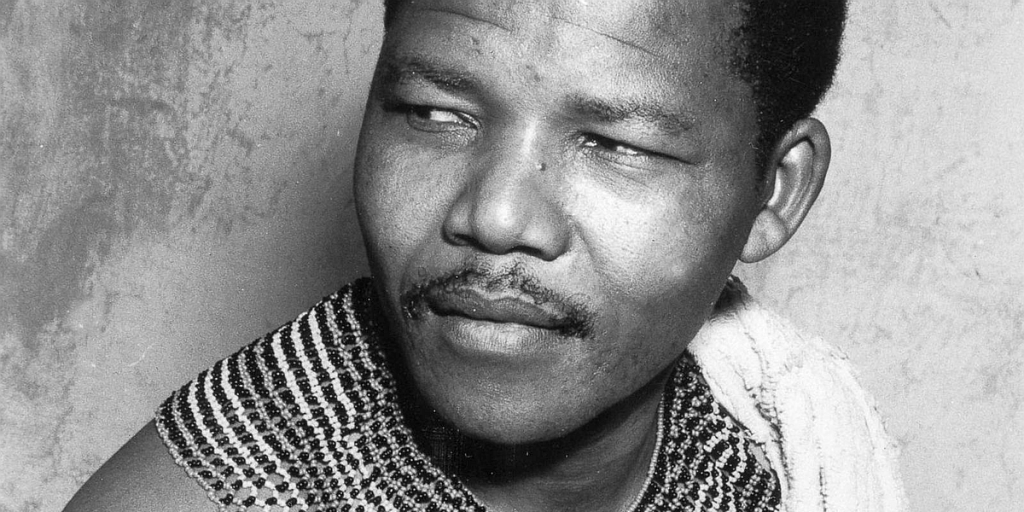
In 1963, when many fellow leaders of the ANC and the Umkhonto we Sizwe were arrested, Mandela was brought to stand trial with them for plotting to overthrow the government by violence. His statement from the dock received considerable international publicity. On 12 June 1964, eight of the accused, including Mandela, were sentenced to life imprisonment. From 1964 to 1982, he was incarcerated at Robben Island Prison, off Cape Town; thereafter, he was at Pollsmoor Prison, nearby on the mainland.
During his years in prison, Nelson Mandela’s reputation grew steadily. He was widely accepted as the most significant black leader in South Africa and became a potent symbol of resistance as the anti-apartheid movement gathered strength. He consistently refused to compromise his political position to obtain his freedom.
Nelson Mandela was released on 11 February 1990. After his release, he plunged himself wholeheartedly into his life’s work, striving to attain the goals he and others had set out almost four decades earlier. In 1991, at the first national conference of the ANC held inside South Africa since the organization had been banned in 1960, Mandela was elected President of the ANC, while his lifelong friend and colleague, Oliver Tambo, became the organisation’s National Chairperson.
In 1993, the Nobel Peace Prize was awarded jointly to Nelson Mandela and Frederik Willem de Klerk “for their work for the peaceful termination of the apartheid regime, and for laying the foundations for a new democratic South Africa.”
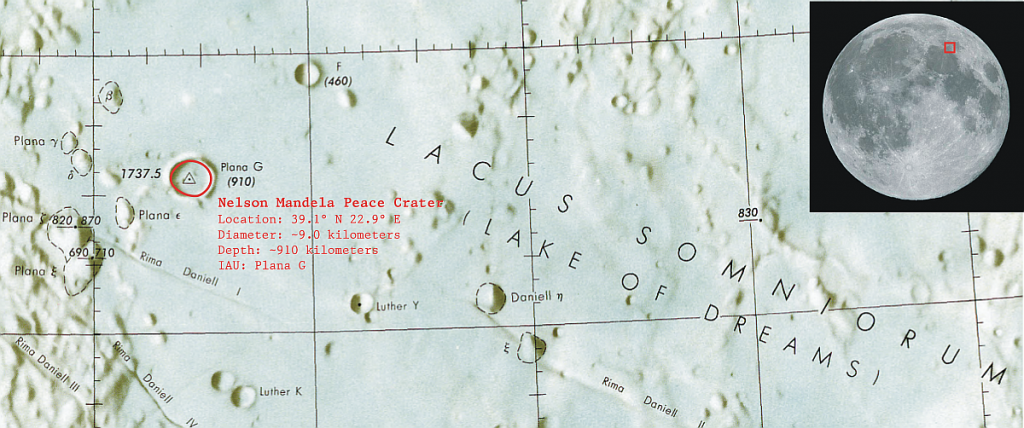
The crater designated to honor Nelson Mandela was previously known as Plana G, and is located at 39.1º North (latitude) and 22.9º East Longitude) on the Earth-facing side of the Moon. It measures approximately nine kilometers in diameter, with a depth of about 910 meters.
The Nelson Mandela Peace Crater is part of the Plana crater group, named for Baron Giovanni Antonio Amedeo Plana (6 November 1781–20 January 1864), an Italian-born astronomer and mathematician, considered among the leading scientists of his era. Plana’s contributions included work on the motions of the Moon, as well as integrals, elliptic functions, heat, electrostatics, and geodesy.
Mandela (Plana G) is the second-largest of five satellite craters to Plana, and rests in the northern section of the Moon’s magnificent Lake of Dreams.
The official designation of a Lunar crater is a singular honor bestowed upon only a select few luminaries. Among those receiving this rare tribute over the past century are Leonardo da Vinci, Christopher Columbus, Sir Isaac Newton and Jules Verne.
Luna Society International is the world’s largest and most prominent group advocating privatized exploration, settlement and development of Earth’s Moon. The centerpiece of the Society’s effort is a ten-year, $3.8-billion (USD) program to return humans to the Moon and establish permanent bases there.
The Society has also developed the most successful commercially-available lunar photomap software ever released to the public, the Full Moon Atlas (http://www.fullmoonatlas.com), which is used by astronomers and in classrooms around the world.
The Society successfully advocated the removal of a crater named for an accused Nazi war criminal, Dr. Hans Eppinger, Jr., by the International Astronomical Union, and was the prime mover behind the draft proposal to designate a group of Lunar craters as a memorial to the seven crew members who perished in the 2003 Space Shuttle Columbia (STS-107) tragedy. (See https://lunasociety.org/news/columbia_region.shtml)
# # #
NELSON MANDELA INTERNATIONAL PEACE CRATER INFORMATION:
Eponym: Nelson Rolihlahla Mandela
IAU Designation: Plana G
Location: Northern Lacus Somniorum (39.1° N 22.9° E)
Approximate Crater Diameter: ~8.9 kilometers
Approximate Crater Depth: ~990 meters
Nelson Mandela International Day Website
Biographical information from Les Prix Nobel: The Nobel Prizes (Tore Frängsmyr, Editor, Nobel Foundation), Stockholm, 1994
